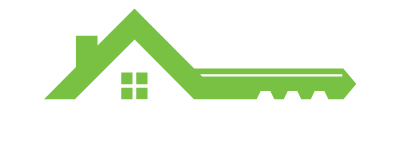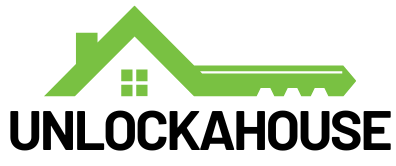Welcome to Unlockahouse! Buying your first home is a significant milestone and an exciting journey. In Nigeria, the process can be complex, but with the right guidance, it becomes manageable and rewarding. This step-by-step guide will walk you through everything you need to know to buy your first home in Nigeria. Whether you’re looking for a cozy apartment in Lagos or a spacious bungalow in Abuja, we’ve got you covered. Don’t forget to check out our Property tab for the latest listings at Unlockahouse Properties.
Step 1: Assess Your Financial Situation
Before diving into the home-buying process, it’s crucial to evaluate your financial readiness. Consider the following:
- Savings: How much have you saved for a down payment?
- Income: Is your income stable and sufficient to cover mortgage payments?
- Credit Score: Ensure your credit score is in good shape, as it affects your loan eligibility and interest rates.
Step 2: Determine Your Budget
Establish a realistic budget for your home purchase. Factor in:
- Down Payment: Typically 20% of the property price.
- Monthly Payments: Include mortgage, insurance, property taxes, and maintenance.
- Additional Costs: Legal fees, agency fees, and moving expenses.
Use online calculators to estimate these costs and understand what you can afford.
Step 3: Research Locations
Nigeria is a diverse country with various cities offering unique living experiences. Research different areas to find one that fits your lifestyle and budget. Consider:
- Proximity to Work
One of the most important factors to consider when choosing a new neighborhood is its proximity to your workplace. Living closer to your office can significantly improve your quality of life by reducing commute time and stress. Begin by calculating the exact distance between the potential neighborhood and your workplace, taking into account various modes of transportation such as driving, public transit, biking, or even walking.
Consider the availability and convenience of public transportation options like buses, trains, or subways, and check whether there are direct routes to your office. Take note of rush hour traffic patterns and potential delays to ensure your projected commute time is realistic.
Additionally, think about the neighborhood’s overall accessibility. Are there major highways or main roads that make traveling easier? How reliable is the local transportation infrastructure?
Finally, weigh the benefits of a shorter commute against the cost of living in a particular neighborhood. Sometimes, areas closer to business districts may have higher housing costs, but the trade-off in time saved and reduced travel stress might be well worth it.
By thoroughly evaluating these factors, you can make an informed decision that balances proximity to work with other lifestyle preferences, ultimately enhancing your daily routine and overall well-being.
- Amenities
When selecting a neighborhood, the availability of essential amenities such as schools, hospitals, markets, and recreational facilities plays a crucial role in determining its suitability for your lifestyle.
Educational Institutions: Investigate the proximity and quality of schools and educational institutions in the area. This includes not just primary and secondary schools, but also daycare centers, preschools, and higher education institutions. Research their ratings, the curriculum offered, and extracurricular activities available, as well as transportation options if the schools are not within walking distance.
Healthcare Facilities: Access to healthcare is paramount. Ensure there are hospitals, clinics, and specialty medical facilities nearby. Check for reviews and ratings of these establishments, and consider the availability of emergency care services. Additionally, having pharmacies and wellness centers in close proximity can be a significant advantage.
Markets and Shops: Convenient access to markets, grocery stores, and shopping centers is essential for daily living. Look for a variety of retail options that cover everything from fresh produce to household goods. Specialty shops, convenience stores, and even farmers’ markets can enhance the quality of life by providing easy access to diverse products.
Recreational Facilities: Recreational amenities such as parks, gyms, sports complexes, and entertainment venues contribute significantly to a balanced and fulfilling lifestyle. Consider the availability of outdoor spaces for activities like jogging, biking, and picnicking. Additionally, nearby theaters, restaurants, cafes, and cultural centers can offer entertainment and community engagement opportunities.
Overall Connectivity: Besides individual amenities, the overall connectivity and infrastructure of the neighborhood play a crucial role. Well-maintained roads, pedestrian pathways, and bike lanes enhance the ease of access to these amenities.
By thoroughly evaluating the presence and quality of these amenities, you can ensure that the neighborhood you choose is not only convenient but also enriches your daily life in meaningful ways.
- Safety
Understanding the safety of a neighborhood is paramount when considering a move. The crime rate in an area is a critical indicator of its security and overall well-being. Here are several steps to evaluate the safety of a potential neighborhood:
Crime Statistics: Start by researching the local crime statistics through reliable sources such as government databases, local police department reports, and neighborhood crime maps. These resources typically provide detailed information on various types of crimes, including property crimes, violent crimes, and white-collar crimes.
Trends Over Time: Look at crime trends over the past several years to determine if crime rates are increasing, decreasing, or stable. Areas with decreasing crime rates may be undergoing positive changes and improvements in community safety.
Types of Crime: Understanding the types of crime prevalent in the area can offer deeper insights into safety concerns. For example, high rates of petty theft may require different precautions than an area with frequent violent crimes.
Community Vigilance: Take note of community safety initiatives such as neighborhood watch programs or community policing efforts. Active community engagement in safety can contribute significantly to reducing crime rates and enhancing the sense of security.
Local Law Enforcement Presence: Consider the presence and responsiveness of local law enforcement. A strong police presence and quick response times to incidents can deter criminal activity and ensure timely intervention when needed.
Personal Experiences: Speaking with current residents can provide firsthand accounts of safety in the neighborhood. Residents can offer valuable perspectives on how safe they feel, common safety concerns, and effective measures they’ve adopted.
Safety Services: Evaluate the availability of emergency services such as fire stations and emergency medical services. Proximity to these facilities can be crucial in times of need.
Technology and Infrastructure: Modern neighborhoods may utilize safety technologies such as surveillance cameras, well-lit streets, secure building entrances, and community alert systems to enhance security.
By comprehensively assessing these factors, you can gain a holistic understanding of the safety of the neighborhood. Ensuring that you choose a safe community is essential for peace of mind and the protection of your loved ones and property.
Step 4: Get Pre-Approved for a Mortgage
Obtaining a mortgage pre-approval gives you a clear idea of how much you can borrow. It also shows sellers that you are a serious buyer. To get pre-approved:
- Choose a Lender
Selecting a reputable lender is a crucial step in the home-buying process. Whether you opt for a bank or a mortgage company, here are several key factors to consider:
1. Reputation and Reviews: Start by researching potential lenders’ reputations. Look for customer reviews and ratings on platforms like Better Business Bureau, Trustpilot, and Google Reviews. Positive reviews and high ratings can be indicative of good customer service and trustworthiness.
2. Interest Rates and Fees: Compare the interest rates offered by different lenders. Even a small difference in rates can result in significant savings over the life of your loan. Additionally, consider various fees such as origination fees, application fees, and closing costs. Request a Loan Estimate from multiple lenders to compare these costs directly.
3. Types of Loans Offered: Different lenders may specialize in various types of mortgage products such as fixed-rate, adjustable-rate, FHA loans, VA loans, and more. Ensure the lender offers the type of loan that best fits your financial situation and long-term goals.
4. Pre-Approval Process: A reputable lender should provide a thorough and transparent pre-approval process. This involves evaluating your financial health, including credit score, income, and debt-to-income ratio, to determine the loan amount you qualify for. A solid pre-approval can strengthen your position in negotiations with sellers.
5. Customer Service: Good communication and customer service are crucial. Your lender should be responsive, willing to answer questions, and capable of explaining complex mortgage terms in understandable language. Reach out to potential lenders to gauge their level of customer support.
6. Flexibility and Terms: Examine the flexibility of loan terms offered. This includes options for down payments, loan durations, and customizable payment schedules. Some lenders may also offer rate locks to secure your interest rate during the loan process.
7. Local vs. National Lenders: Local credit unions or banks might offer more personalized service and competitive rates, whereas national lenders may have more robust online tools and resources. Decide which aligns better with your preferences.
8. Recommendations and Referrals: Seek recommendations from friends, family, and real estate professionals who have had positive experiences with specific lenders. Personal referrals can provide valuable insights.
9. Financial Strength and Stability: Research the financial stability of the lender. A financially stable institution is less likely to encounter operational issues or disruptions that could affect your mortgage process.
10. Online Tools and Accessibility: Evaluate the lender’s digital presence. User-friendly online tools for applications, payments, and account management can offer convenience and streamline the mortgage process.
By carefully considering these factors and conducting thorough research, you can select a reputable lender that suits your needs and ensures a smooth, reliable mortgage experience.
- Submit Documents
When applying for a mortgage, providing the necessary documents promptly and accurately is essential to facilitate a smooth approval process. Here’s a detailed guide on the essential documents you will likely need to submit:
1. Proof of Income:
Pay Stubs: Typically, the last 2-3 months of pay stubs are required to verify your current income.
Tax Returns: Lenders usually ask for the last 2-3 years of tax returns, including all schedules, to get a comprehensive view of your financial history.
W-2 Forms: The last 2-3 years of W-2 forms are required to corroborate your employment income.
Self-Employed Income: If you’re self-employed, you’ll need to provide profit-and-loss statements and possibly a year-to-date business financial statement.
2. Bank Statements:Checking and Savings Accounts: Most lenders request the last 2-3 months of statements to verify your assets and funds available for down payments and closing costs.
Investment Accounts: Statements from retirement accounts, stocks, bonds, or other investments may also be needed to show additional assets.
3. Credit History:Credit Report Authorization: Lenders will request permission to pull your credit report to assess your credit score and review your credit history.
Explanation for Credit Issues: If there are blemishes on your credit report (e.g., late payments, collections), you may need to provide written explanations or documentation showing how these issues were resolved.
4. Identification Documents:Government-Issued ID: A copy of a government-issued ID such as a driver’s license or passport to verify your identity.
Social Security Number (SSN): To allow the lender to pull your credit report and verify your financial information.
5. Employment Verification:Employment Verification Letter: A letter from your employer confirming your job title, employment status, and salary.
Contact Information for Employer: So the lender can verify your employment directly if needed.
6. Other Financial Information:Debts and Obligations: A list of your current debts, including car loans, student loans, and any other monthly obligations. Recent statements for these debts may be required.
Divorce Decrees: If applicable, you will need to provide past divorce decrees or alimony/child support documentation.
Gift Letters: If you’re receiving financial help from family or friends for the down payment, a gift letter stating that the money is a gift and not a loan will be needed.
7. Purchase Agreement:Real Estate Contract: A signed copy of the purchase agreement for the home you intend to buy. This document outlines the terms and conditions of the home purchase.
By preparing and organizing these documents in advance, you can expedite the mortgage application process and avoid potential delays. Always double-check with your lender for any additional documents they may require specific to your situation. - Receive Pre-Approval
Obtaining a pre-approval letter is a critical step in the home-buying process, as it provides an estimate of how much you can borrow and demonstrates to sellers that you are a serious and qualified buyer. Here’s an in-depth guide on what to expect and how to proceed once you’ve received pre-approval:
1. Understanding Pre-Approval:
Pre-Approval vs. Pre-Qualification: Unlike pre-qualification, which is an initial estimate based on self-reported information, pre-approval involves a thorough evaluation of your financial situation by the lender, including a credit check, income verification, and assessment of your assets and debts.
Loan Amount: The pre-approval letter will state the maximum loan amount you qualify for, which helps you set a realistic budget for your home search.
2. Importance of a Pre-Approval Letter:Credibility with Sellers: A pre-approval letter signals to sellers that you are financially capable of purchasing a home, making your offer more competitive.
Streamlined Home Search: Knowing your budget allows you to focus your home search on properties within your price range, saving you time and effort.
3. Steps to Take After Receiving Pre-Approval:Review Your Pre-Approval Letter: Carefully read your pre-approval letter to understand the terms, including the loan amount, interest rate (if stated), and any conditions that must be met before final approval.
Maintain Financial Stability: Avoid making significant purchases, changing jobs, or taking on new debt, as these actions could affect your credit score and financial profile, potentially jeopardizing your pre-approval status.
Stay in Touch with Your Lender: Keep open communication with your lender throughout your home search. If your financial situation changes, or if you find a property of interest, inform your lender right away.
4. Validity Period:Expiration Date: Pre-approval letters typically have an expiration date, often 60 to 90 days. If your home search extends beyond this period, you may need to update your financial information and obtain a new pre-approval letter.
5. Next Steps:Start Your Home Search: With your pre-approval letter in hand, you can confidently begin viewing homes within your budget. Collaborate closely with your real estate agent to identify suitable properties.
Make Offers: When you find a home you want to purchase, your pre-approval letter will support your offer, showing sellers that you are a serious buyer with approved financing.
Begin the Loan Application Process: Once your offer is accepted, you’ll move forward with the full mortgage application, providing any additional documents requested by your lender and working through the underwriting process.
By obtaining a pre-approval letter, you position yourself as a serious and financially prepared buyer, which can significantly enhance your home-buying experience and increase your chances of securing your dream home.
Step 5: Start House Hunting
With your pre-approval and budget in hand, start looking for homes. Visit Unlockahouse Properties to explore a wide range of listings. While house hunting:
- Attend Open Houses: Visit multiple properties to compare options.
- Make a Checklist: Note essential features and amenities you desire.
- Ask Questions: Inquire about the property’s history, condition, and neighborhood.
Step 6: Make an Offer
When you find the perfect home, it’s time to make an offer. Here’s how:
- Consult Your Agent: Work with a real estate agent to draft a competitive offer.
- Include Contingencies: Add conditions like home inspection and financing approval.
- Negotiate: Be prepared to negotiate the price and terms with the seller.
Step 7: Conduct Due Diligence
Before finalizing the purchase, conduct thorough due diligence:
- Home Inspection: Hire a professional to inspect the property for structural and mechanical issues.
- Property Title Search: Ensure the property’s title is clear and free of legal disputes.
- Review Contracts: Carefully read and understand all contracts and agreements.
Step 8: Secure Financing
Once your offer is accepted and due diligence is complete, secure your financing:
- Final Loan Approval: Submit any additional required documents to your lender.
- Loan Agreement: Review and sign the loan agreement.
Step 9: Close the Deal
The closing process involves finalizing the purchase:
- Sign Documents: Sign the necessary paperwork, including the deed and mortgage.
- Pay Closing Costs: Pay all closing fees, which may include legal fees, stamp duty, and agency fees.
- Receive Keys: Once all documents are signed and payments made, you’ll receive the keys to your new home.
Step 10: Move In and Enjoy
Congratulations! You’ve successfully purchased your first home in Nigeria. Now it’s time to move in and make it your own.
Buying a home can be challenging, but following these steps will help you navigate the process with confidence. Remember, Unlockahouse is here to support you every step of the way. For more information and to browse our latest property listings, visit the Unlockahouse Properties page. Happy house hunting!





